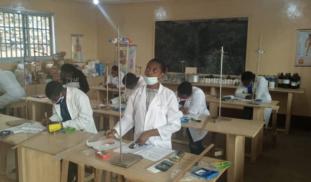73
-1
0
Like?
Please wait...
About This Project
STEM education is key that would drive the socio-economic development of any country. In most countries, especially developing countries, the love, participation and performance in STEM subjects by students is low, and even lower in girls. Less than 25% of African higher education students pursue STEM-related career fields. It is therefore urgent to bring innovation in the system of teaching STEM subjects so as to improve participation and performance in young people.

Browse Other Projects on Experiment
Related Projects
Can more practical, rather than theoretical teaching of STEM subjects improve student participation and performance?
STEM education is key that would drive the socio-economic development of any country. In most countries...
Toward a Thermostatistics for Complex Systems
Let's grow a community of researchers and science-lovers who are passionate about understanding complex...

